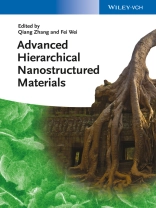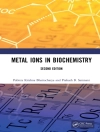An overview of the recent developments and prospects in this highly topical area, covering the synthesis, characterization, properties and applications of hierarchical nanostructured materials. The book concentrates on those materials relevant for research and development in the fields of energy, biomedicine and environmental protection, with a strong focus on 3D materials based on nanocarbons, mesoporous silicates, hydroxides, core-shell particles and helical nanostructures.
Thanks to its clear concept and application-oriented approach, this is an essential reference for experienced researchers and newcomers to the field alike.
Cuprins
Preface
STRUCTURAL DIVERSITY IN ORDERED MESOPOROUS SILICA MATERIALS
Introduction
Electron Crystallography and Electron Tomography
Diverse Structures of Ordered Mesoporous Silicas
Outlook
HIERARCHICALLY NANOSTRUCTURED BIOLOGICAL MATERIALS
Introduction
‘Bottom-Up’ Design Scheme
Organic-Inorganic Interfaces
Engineering Principles in Biological Materials
Model Hierarchical Biological Systems and Materials
Conclusions and Outlook
USE OF MAGNETIC NANOPARTICLES FOR THE PREPARATION OF MICRO- AND NANOSTRUCTURED MATERIALS
Introduction
Preparation of Superparamagnetic Nanocolloids
Magnetic Gels
Self-Assembly of Magnetic Nanoparticles, Nanoclusters, and Magnetic?Polymer Nanocomposites
Magnetic Colloidal Crystals
Concluding Remarks
HOLLOW METALLIC MICRO/NANOSTRUCTURES
Introduction
Synthetic Methods for 1-D Hollow Metallic Micro/Nanostructures
Synthetic Methods for 3-D or Nonspherical Hollow Metallic Micro/Nanostructures
Potential Applications of Hollow Metallic Micro/Nanostructures
Conclusions and Outlook
POLYMER VESICLES
Introduction
Vesicle Formation
Smart Polymer Vesicles
Applications
Summary and Outlook
HELICAL NANOARCHITECTURE
Introduction
Fabrication of Organic Helical Nanostructures
Fabrication of Inorganic Helical Nanostructures
Properties of Helical Nanostructures
HIERARCHICAL LAYERED DOUBLE HYDROXIDE MATERIALS
Introduction
Preparation of Hierarchical LDHs
Properties of Hierarchical LDHs
Summary and Outlook
HIERARCHICALLY NANOSTRUCTURED POROUS BORON NITRIDE
Introduction
Synthesis of Mesoporous Boron Nitride
Synthesis of Microporous Boron Nitride
BN Nanosheets (BNNSs)
Conclusion
MACROSCOPIC GRAPHENE STRUCTURES: PREPARATION, PROPERTIES, AND APPLICATIONS
Introduction
Preparation of Graphene
The Preparation and Properties of Graphene Macroscopic Structures
Applications of Graphene Macroscopic Structures
Conclusions and Outlook
HYDROTHERMAL NANOCARBONS
Introduction
Templating – An Opportunity for Pore Morphology Control
Carbon Aerogels
Hydrothermal Carbon Nanocomposites
Hydrothermal Carbon Quantum Dots
Summary and Outlook
HIERARCHICAL POROUS CARBON NANOCOMPOSITES FOR ELECTROCHEMICAL ENERGY STORAGE
Introduction
Types of Porous Structures
Synthesis of Porous Structures
Applications of Hierarchically Porous Carbon Composites
Summary and Conclusions
HIERARCHICAL DESIGN OF POROUS CARBON MATERIALS FOR SUPERCAPACITORS
Introduction
Capacitance: Electrostatic Storage
Ion Accessibility: Porosity and Surface Wettability
Conclusion
NANOSCALE FUNCTIONAL POLYMER COATINGS FOR BIOINTERFACE
Introduction
Synthesis of Precursors – Substituted-[2.2]paracyclophanes
Synthesis of Functionalized Poly-p-Xylylenes via CVD Polymerization
Surface Bioconjugate Chemistry by Using Functionalized Poly-p-Xylylenes
Multifunctional and Gradient Poly-p-Xylylenes
Outlook
Index
Despre autor
Qiang Zhang obtained his Ph D degree from Tsinghua University (China) in 2009. After a short stay as a Research Associate in Case Western Reserve University (USA), he joined the Fritz Haber Institute of the Max Planck Society (Germany) as a post-doctoral fellow. He was appointed an associate professor of chemical engineering of Tsinghua University in 2011. His current research interests are nanocarbon, advanced hierarchical materials, energy conversion and storage. Dr. Zhang has published around 100 research articles and written 3 book chapters.
Fei Wei obtained his Ph D in chemical engineering from China University of Petroleum in 1990. After a postdoctoral fellowship at Tsinghua University, he was appointed an associate professor in 1992 and professor of chemical engineering of Tsinghua University in 1996. He was also a Visiting Professor at Ohio State University (USA), University of Western Ontario (Canada), and Nagoya Institute of Science and Technology (Japan). Currently he is the director of the Fluidization Laboratory of Tsinghua University (FLOTU). His scientific interests include chemical reaction engineering, multiphase flow, advanced materials, and sustainable energy. He has authored and co-authored over 300 refereed publications. He was awarded the Young Particuology Research Award for his contributions in the field of powder technology












